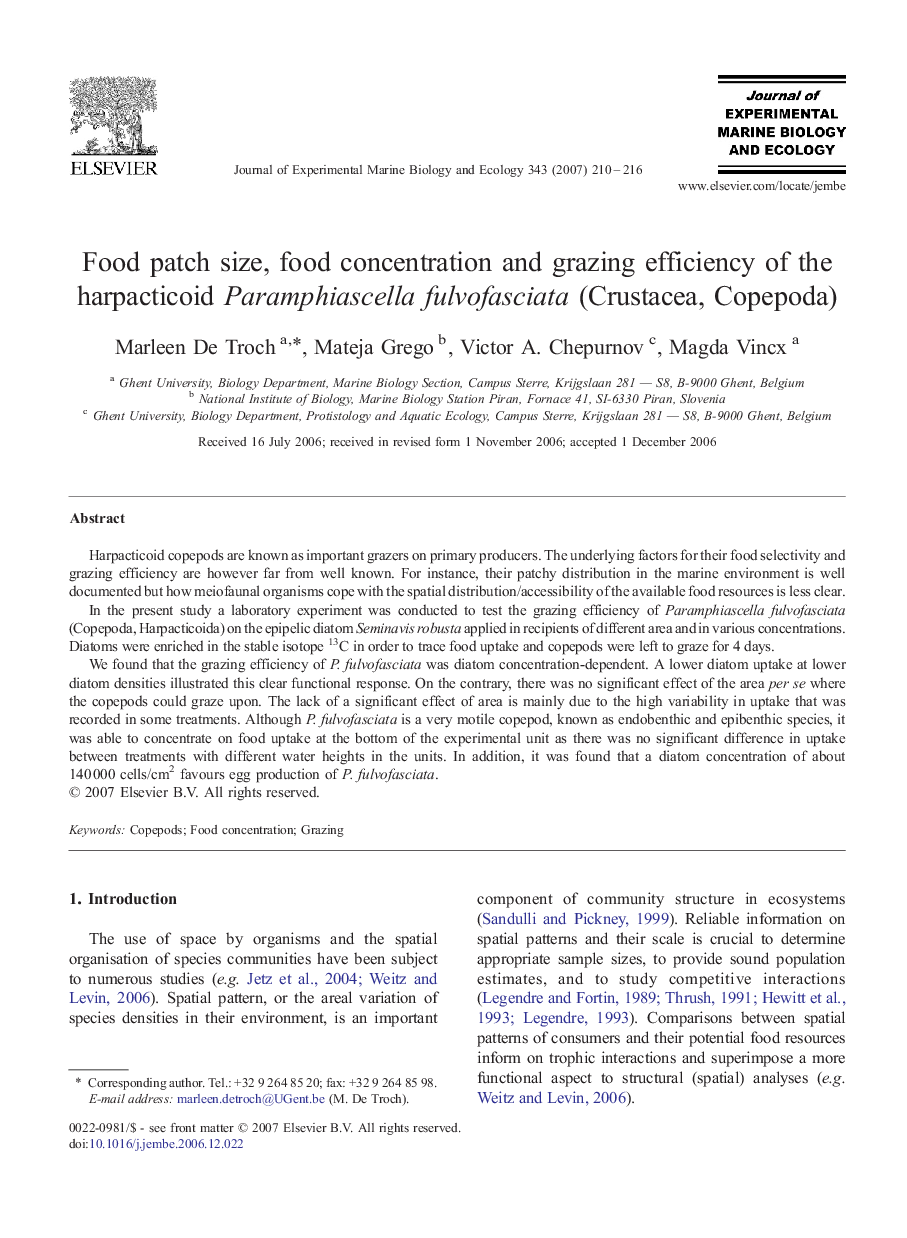| Article ID | Journal | Published Year | Pages | File Type |
|---|---|---|---|---|
| 4397676 | Journal of Experimental Marine Biology and Ecology | 2007 | 7 Pages |
Harpacticoid copepods are known as important grazers on primary producers. The underlying factors for their food selectivity and grazing efficiency are however far from well known. For instance, their patchy distribution in the marine environment is well documented but how meiofaunal organisms cope with the spatial distribution/accessibility of the available food resources is less clear.In the present study a laboratory experiment was conducted to test the grazing efficiency of Paramphiascella fulvofasciata (Copepoda, Harpacticoida) on the epipelic diatom Seminavis robusta applied in recipients of different area and in various concentrations. Diatoms were enriched in the stable isotope 13C in order to trace food uptake and copepods were left to graze for 4 days.We found that the grazing efficiency of P. fulvofasciata was diatom concentration-dependent. A lower diatom uptake at lower diatom densities illustrated this clear functional response. On the contrary, there was no significant effect of the area per se where the copepods could graze upon. The lack of a significant effect of area is mainly due to the high variability in uptake that was recorded in some treatments. Although P. fulvofasciata is a very motile copepod, known as endobenthic and epibenthic species, it was able to concentrate on food uptake at the bottom of the experimental unit as there was no significant difference in uptake between treatments with different water heights in the units. In addition, it was found that a diatom concentration of about 140 000 cells/cm2 favours egg production of P. fulvofasciata.
